EdSource asked leaders from California’s institutions of higher education and policy and advocacy organizations for their thoughts on Gov. Gavin Newsom’s funding plans for postsecondary priorities in the May Revision of the 2021-22 budget. We wanted to know what they felt would most advance students’ recovery from the pandemic and what they thought was missing.
Scroll down and click on the photos to read their thoughts on the governor’s plans for postsecondary education. Also see what education leaders are saying about the governor’s early education and K-12 proposals.

Zahraa Khuraibet
California State University Student Association
What among the governor’s proposals will most advance students’ recovery from the pandemic and why?
We are happy to see the governor’s support of the California State University and its students through his proposed investments. Many of the proposed items are going to help the students of the CSU as we begin to transition into a new normal. This includes the new and historic $4 billion for student housing insecurity, which has been a major barrier for too many students for too long. We also believe the substantial investment in broadband and campus infrastructure will also be vital to student success in a post-pandemic environment. CSU students appreciate the administration’s continued prioritization of equity and affordability.
What priority should have been in the budget but wasn’t?
Students have been clear that we need comprehensive reform and funding of a Cal Grant system that will expand opportunities for students and support our lowest-income students who have disproportionately taken on more and more debt while working multiple jobs and struggling to graduate. We look forward to working with the governor, the Legislature, and our partners to ensure that any reform proposed is one that will benefit students.
Zahraa Khuraibet is a master’s student at CSU Northridge and president of the Cal State Student Association, the official voice of the over 480,000 students of the California State University system.

Joseph I. Castro
California State University chancellor
What among the governor’s proposals will most advance students’ recovery from the pandemic and why?
Restoration of previous budget cuts combined with increases in recurring funding will allow the CSU to boldly expand our Graduation Initiative 2025 efforts to eliminate equity gaps and assure that even greater numbers of students are able to earn a high-quality, life-changing degree.
What priority should have been in the budget but wasn’t?
The CSU continues to face decades-long challenges with infrastructure and modernizing our facilities totaling $16 billion and growing every day. While the governor did address this partially in the May Revision, given the state’s extraordinary surplus of one-time funding, we will continue to work hard to inspire the governor and Legislature to allocate additional funds to improve aging campus facilities that serve nearly half a million students.
Joseph I. Castro is chancellor of the California State University.

Andrew Nickens
Student Senate for California Community Colleges (SSCCC)
What among the governor’s proposals will most advance students’ recovery from the pandemic and why?
Basic needs has reached crisis level proportions at California Community Colleges. Many of our students have urgent food and housing needs that have contributed to a historic decline in enrollment over the past year. $30 million in ongoing funding will establish basic needs centers at the 57 colleges that do not have them and give them the ability to hire basic needs coordinators who will act as a broker in identifying, supporting and linking students to on- and off-campus housing, food, mental health, and other basic needs services and resources. We hope Assembly Bill 775 will serve as the implementing language to ensure each college has a baseline and consistent level of service statewide.
What priority should have been in the budget but wasn’t?
We appreciate the governor’s proposal to increase the number of competitive Cal Grant awards by 9,000 and required completion of FAFSA. However, this financial aid proposal ignores the artificial barriers constructed in our state’s financial aid system that discriminates against hundreds of thousands of community college students based on age and time out of high school. CCC, CSU and UC students have been fighting for true reform as outlined by the Cal Grant Equity Framework, and we hope AB 1456 will serve as the implementing language to achieve this reform. Our state can’t continue to operate on a discriminatory system ,and our students cannot afford to wait.
Andrew Nickens is a student at Folsom Lake College and vice president of legislative affairs, Student Senate for California Community Colleges, the official voice of the 2.1 million California community college students.

Eloy Oakley
California Community Colleges Chancellor
What among the governor’s proposals will most advance students’ recovery from the pandemic and why?
Within higher education, community college students have been the most impacted population during COVID-19. Investments presented in the May Revision generally fall into six important categories: restoring institutional resources; post-pandemic recovery; diversity, equity, and inclusion; affordability and basic needs; workforce; and pathways. Most notably this budget helps by investing in direct emergency aid for those in greatest need as well as ongoing investments for campus centers and staff to assist students facing food and housing insecurity.
The proposal recognizes that no other system can help put California back to work in the emerging fields of the future like the California Community Colleges can. The governor’s budget plan would speed development of short-term workforce programs and courses that focus on skills development that result in job placements. Funds would also be allocated to colleges whose enrollment has been most disproportionately affected by COVID-19, helping them to retain current students and to re-engage students who were forced to leave college during the pandemic. Finally, resources would be provided to help the return to in-person teaching and learning and while maintaining the flexibilities that students need.
What priority should have been in the budget but wasn’t?
The pandemic has aggravated economic and social challenges for our students and added new uncertainty around employment, day care, stop and start work schedules and unanticipated expenses. A continued urgent concern is the fact that California Community College students are not adequately served by the existing Cal Grant structure. Because of built-in inequities of the Cal Grant program, just 5% of community college students receive a Cal Grant. In most regions of California, a community college education has a higher net price for low-income students than a nearby California State University or University of California campus.
Very few community college students qualify for financial aid to cover living expenses, transportation or textbooks. Additional investment in the Cal Grant program is imperative if we are to significantly increase the number of students earning a degree or credential and transferring to a UC or CSU campus. Ongoing investments supporting community college students with meaningful Cal Grant reform will reap big rewards for California’s future.
Eloy Oakley has served as chancellor of the California Community Colleges since December 2016.

Aidan Arasasingham
University of California Student Association
What among the governor’s proposals will most advance students’ recovery from the pandemic and why?
With historic investments in UC students, Gov. Newsom’s revised budget proposal will bring California higher education roaring back. UC students are especially excited for strengthened investments in student affordable housing, opportunities for displaced student workers, summer financial aid expansion and a 5% base budget increase for the UC system — all in addition to January’s proposed investments in basic needs and emergency financial aid. By directly addressing the high costs of education, Gov. Newsom’s proposed budget would chart an equitable pandemic recovery for students that will make UC more affordable, accessible and excellent for all.
What priority should have been in the budget but wasn’t?
Students and the UC have highlighted the need to boldly invest in closing equity gaps among marginalized student populations through an expansion of Student Academic Preparation and Educational Partnerships (SAPEP) recruitment and retention programs and targeted investments to support undocumented, former foster youth, and carceral system-impacted students. The UC Student Association hopes to work with the Senate and Assembly to have these vital student supports funded in the final budget. We also echo our sister student organizations in calling for the Legislature to reform and modernize the Cal Grant to better and more inclusively address the total cost of attendance for students across the state.
Aidan Arasasingham is a student at UCLA who serves as the president of the University of California Student Association, the official voice of the 285,000 students that attend UC.

Gary S. May
UC Davis Chancellor
What among the governor’s proposals will most advance students’ recovery from the pandemic and why?
We appreciate Gov. Newsom’s strong support for higher education and his acknowledgment of the critical role universities play in helping California rebound from the pandemic.
What priority should have been in the budget but wasn’t?
We look forward to continuing to monitor the ongoing budget deliberations and would respectfully encourage the Legislature to provide additional financial support for higher education’s capital outlay needs.
Gary S. May serves as chancellor at UC Davis.

Evan Hawkins
Faculty Association of California Community Colleges
What among the governor’s proposals will most advance students’ recovery from the pandemic and why?
The governor’s focus on increasing funding for student basic needs will be critical in supporting students as we recover from the pandemic. Additionally, dedicated funding for retention and enrollment strategies, fully retiring the deferrals and increasing cost-of-living adjustments will help provide the support to bring students back to our colleges and maintain our capacity so we don’t turn students away when demand returns.
What priority should have been in the budget but wasn’t?
Dedicated funding for faculty was not included in the budget. As we recover from the pandemic, we need to increase the diversity of our faculty to reflect our students. We also need to significantly increase the support of part-time faculty who make up the largest amount of our faculty in the system. In his press conference, the governor said that the state needs to have teachers’ backs so they can serve students, and a focused increased investment is necessary to accomplish that.
Evan Hawkins is the executive director of the Faculty Association of California Community Colleges, a membership association with a mission to inform, educate, empower and advocate for faculty in service to students and the communities of California.

Keith Curry
President and CEO of Compton College
What among the governor’s proposals will most advance students’ recovery from the pandemic and why?
I am extremely impressed with the governor’s May Revision budget proposal. Gov. Newsom should be commended for his commitment to our recovery with equity. His proposal includes emergency financial assistance, affordable student housing options for community college students and additional funding for basic needs centers. These additional resources will assist California community colleges, including Compton College, in addressing our students’ basic needs as we recover from the pandemic. Compton College enrollment has been impacted more than any other community college in Los Angeles County because of the Covid-19 pandemic. Due to the number of confirmed Covid-19 cases, percentage of Covid-19-related deaths and low rate of vaccination of residents within our community, since 2020 Compton College has experienced over a 20% decline in enrollment. The investments included in the governor’s May Revision proposal will support enrollment and retention efforts at Compton College and help us meet the needs of our community, particularly the African American/Black, Latinx and male populations.
What priority should have been in the budget but wasn’t?
I am very grateful for the governor’s May Revision. It does not, however, address the structural inequities in per-student funding at community colleges compared to the California State University and University of California systems. Especially when you consider the number of low-income, African American/Black, and Latinx students who attend California Community Colleges compared to the California State University and University of California systems.
Keith Curry, Ed.D., is president and CEO of Compton College, a community college in Compton.

Marlene L. Garcia
California Student Aid Commission
What among the governor’s proposals will most advance students’ recovery from the pandemic and why?
Gov. Newsom’s May Revise budget proposal commits unprecedented levels of funding to bend the cost curve for college affordability at a time when students need support the most. A survey conducted by the Student Aid Commission in May 2020 found that more than 7 out of 10 students had lost some or all their income due to the Covid-19 pandemic. His approach will provide a once-in-a-generation opportunity for the state to invest in more California students while supporting economic recovery with equity. The governor’s proposed plans acknowledge the need to support displaced workers in accessing higher education, promote college affordability through the vast expansion of college savings accounts for low-income youth and the development of a new California For All Service Program that compensates college students, including Dreamers, for their public service. The commitment of major funds will facilitate the dismantling of one of the biggest barriers to students seeking higher education: affordability.
What priority should have been in the budget but wasn’t?
The state also has the rare opportunity to put more money directly into college students’ pockets by simplifying our financial aid system just as we reemerge from this pandemic. A comprehensive proposal that simplifies and expands the state’s student financial aid program is moving through the legislative process now. The proposal, the Cal Grant Equity Framework, works in tandem with the governor’s college affordability proposals benefiting students by eliminating eligibility barriers and targeting state resources for the most financially vulnerable students. The equity framework would align the state process with the federal and provide much-needed financial aid that helps students persist and graduate ready to enter the workforce with 21st century skills at a time when employers will need it the most.
Marlene L. Garcia is executive director of the California Student Aid Commission, the state’s financial aid organization that disburses almost $3 billion annually to students with financial need.

Patricia Gándara
UCLA Civil Rights Project
What among the governor’s proposals will most advance students’ recovery from the pandemic and why?
More funding for living expenses. We have many students who are struggling without sufficient food and who are homeless. They cannot afford books; the support for books and materials is also very important.
What priority should have been in the budget but wasn’t?
Building up bilingual teacher preparation programs across the state.
Patricia Gándara is CO-Director of Civil Rights Project at UCLA, which focuses on racial equity research and policy.

Hans Johnson
Public Policy Institute of California Higher Education Center
What among the governor’s proposals will most advance students’ recovery from the pandemic and why?
There’s a lot to like in the governor’s revised budget proposal. Not only does the May Revision provide additional funds to help colleges and students recover from the pandemic, but it also supports long-term strategies that aim to increase access, equity and affordability. New efforts (such as dual admission and common course numbering) along with continued investments in programs to help students progress through our community colleges (such as the Guided Pathways initiative) should lead to more community college students transferring to four-year universities. Improving transitions across California’s education systems will lead to a more diverse pool of graduates from our state’s colleges and universities. And creating an integrated “cradle to career” student data system will help us identify how best to help students reach their educational goals.
What priority should have been in the budget but wasn’t?
Details regarding enrollment targets at UC and CSU are still to be worked out in budget negotiations. Among the 50 states, California ranks near the bottom in access to four-year colleges for recent high school graduates. Opening up more slots for new students, both freshmen and transfer students, would improve educational opportunities for low-income and underrepresented students of color at the state’s public and private universities.
Hans Johnson is the center director and senior fellow at the Public Policy Institute of California Higher Education Center.

Jessica Maxwell
National Center for Youth Law
What among the governor’s proposals will most advance students’ recovery from the pandemic and why?
I applaud the governor’s leadership and investment in establishing the California Child Savings accounts for low-income students, students in foster care and students experiencing homelessness. These accounts are a seed of equity that will help address their post-secondary education access and financial preparedness. I’m especially pleased with the supplemental payments for two groups of students with the highest needs. Financial resources are one of the major barriers to entry for students from low-income backgrounds from institutions of higher education. Hopefully, these investments will help to make the college dream an achievable reality for these students.
Jessica Maxwell is the deputy director, compassionate education systems at the National Center for Youth Law. Her work is focused on advancing equity for system-impacted scholars in California.

Peter J. Taylor
ECMC Foundation
What among the governor’s proposals will most advance students’ recovery from the pandemic and why?
This is the best higher education budget in decades. I am pleased that there are resources to address enrollment declines in community colleges and inefficient barriers to student success throughout the three systems. Overwhelmingly, students who were most affected by Covid’s fallout were those from vulnerable backgrounds, including first-generation and low-income students. Gaps in basic needs were also most acutely felt along racial equity lines. The $100 million one-time funding to address food and housing insecurity among California community college students is one that recognizes the holistic, human needs of students to be successful. In tandem with investments made around transfer reform (such as course numbering and guaranteed admission pathways), the revised budget pays serious attention to the prioritization for equitable socioeconomic mobility.
What priority should have been in the budget but wasn’t?
Perhaps an area that could have received more attention are accountability metrics. Recognizing that the pandemic has disrupted the strategies of many institutions, metrics for capturing recovery success and which institutions are most committed to supporting students are increasingly critical to ensure effective use of public dollars and to restore the public’s faith in the value of higher education.
Peter J. Taylor is the former CFO of the University of California system and a current California State University trustee. He is the president of ECMC Foundation, a national funder focused on postsecondary education.
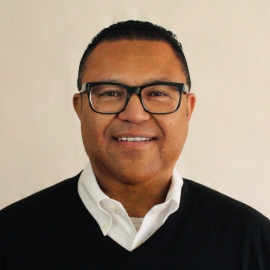
Vincent Stewart
Children Now
What among the governor’s proposals will most advance students’ recovery from the pandemic and why?
In the May Revise, the governor proposed unprecedented investments to address college access and affordability, including additional funding for Cal Grants, making summer financial aid at the UC and CSU permanent, funding for basic needs centers and coordinators at community colleges, and building desperately needed low-cost student housing. All of these initiatives will make college more affordable and attainable for all students, but particularly those from low-income families who deferred their post-secondary education or were forced to drop out, and of course those whose college and high school experience this past year was unlike any other.
What priority should have been in the budget but wasn’t?
The May Revise includes substantial additional funding to support and recruit K-12 teachers but lacks equivalent investments beyond those proposed in the January budget for college faculty. Community college, CSU and UC faculty have endured similar challenges as their K-12 peers. Because of the stress and trauma of Covid, we’ll likely see a spike in retirements and departures from the profession. In addition, higher education struggles with a lack of faculty diversity and few opportunities for professional learning. As we emerge from the pandemic, we should increase as much as possible our investment and support for college faculty.
Vincent Stewart is the chief impact and program officer and senior managing director of education policy at Children Now, a whole-child research and advocacy organization that also coordinates the Children’s Movement of California.
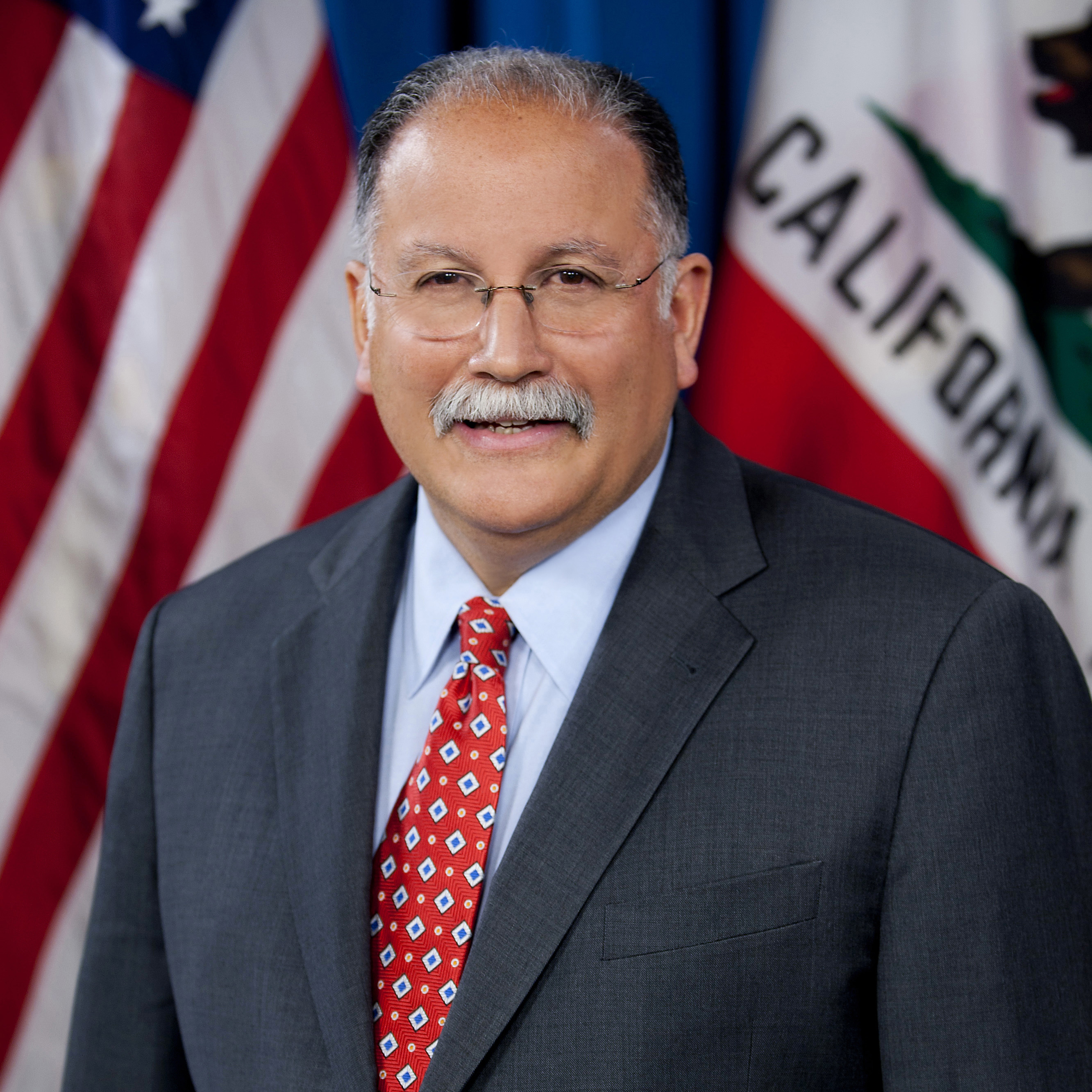
Assemblymember Jose Medina, D-Riverside
Chair of the Higher Education Committee
What among the governor’s proposals will most advance students’ recovery from the pandemic and why?
Gov. Newsom’s steadfast leadership and support of student success are reflected in his historic investment of $48 billion for higher education. This will not only alleviate the challenges brought forward by Covid-19 but will jump-start California’s economy. The investments made to solve student homelessness and provide summer financial aid are monumental strides in addressing student basic needs, underscoring the true cost of attendance. These allocations further the Legislature’s goal of modernizing the Cal Grant system. This pandemic has exposed that the costs of textbooks, housing and broadband access can hinder student success. If we want to use our higher education institutions as drivers of the economy, we must build up our financial aid programs for student success.
What priority should have been in the budget but wasn’t?
I applaud Gov. Newsom’s critical investments in higher education, which represent strategic steps in increasing financial assistance for tuition. However, the state must reform Cal Grant, creating a modernized system that further assists students, not just with their tuition costs, but also with the total cost of earning their college degree. I will continue to work alongside the governor and Legislature to help address the financial aid challenges our students face, particularly through the Cal Grant Equity Framework. The May Budget revise showcases a strong outlook towards our state’s economic future.
Jose Medina, D-Riverside, is chairman of the Higher Education Committee of the California State Assembly.

Monica Lozano
College Futures Foundation
What among the governor’s proposals will most advance students’ recovery from the pandemic and why?
This budget represents a historic investment in higher education, student supports, more efficient pathways across segments and connections to good jobs. The strong equity focus —targeting resources to those who would benefit most from college degrees and have been hit hardest by the pandemic—is key to advancing recovery and socioeconomic mobility. Smoother experiences for students will be created through continued investment in Guided Pathways and dual enrollment, and new support for common course numbering and dual admissions. Expanding regional collaboratives will develop clear pathways to well-paying jobs. Finally, this budget tackles the practical realities of making college affordable by addressing high non-tuition costs such as housing and other basic needs. With these priorities, we are well on our way to recovering as a state and building an inclusive economy with opportunity for all.
What priority should have been in the budget but wasn’t?
The resources focused on college affordability in this budget are robust. However, the risk of these new, standalone funding streams is that the burden will fall on students to determine what they are eligible for and how to apply — as well as on campuses to implement — rather than bundling resources and disbursing them proactively through a single platform or state agency. California should enable students to submit a single application to access various basic needs supports and services alongside financial aid. That would address many necessities for low-income students without adding another hurdle in the path to a degree.
Monica Lozano is president and CEO of College Futures Foundation, an organization working statewide to catalyze systemic change, increase college degree completion, and close equity gaps so that an educational path to opportunity becomes available to every student, regardless of ZIP code, skin color or income. She recently served as a member of the Governor’s Task Force on Business and Jobs Recovery.

Joel Vargas
Jobs for the Future
What among the governor’s proposals will most advance students’ recovery from the pandemic and why?
The emphasis of the proposal on creating partnerships at the regional level that accelerate student learning, credential attainment and connections to career experiences will prove to be critical infrastructure for getting students, both younger and older, ready for and into good jobs in good time in the communities where they reside. This includes investments in Regional K-16 Collaboratives, High-Road Training Partnerships and Regional Partnerships, Work-based Learning, Dual Enrollment and Competency-Based Education.
What priority should have been in the budget but wasn’t?
Many of these evidenced-based strategies are complementary. To ensure optimal impact – and avoid siloed, fractured, even competitive efforts – state leaders should communicate how they can and should be applied together toward a common aim of inclusive economic growth in regions.
Joel Vargas is vice president of programs at Jobs for the Future, a national nonprofit organization that drives economic advancement for all.
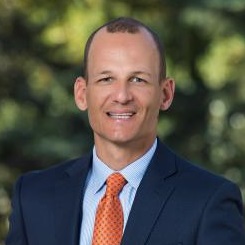
Assemblymember Kevin McCarty, D-District 7
Assembly District 7
What among the governor’s proposals will most advance students’ recovery from the pandemic and why?
$4 billion for higher education student housing to address the high cost of living.
What priority should have been in the budget but wasn’t?
Debt Free College plan, via Cal Grant expansion and modernization. It’s also important to focus on UC/CSU access expansion, enrollment growth and off-campus centers like UC Davis-Sacramento Campus.
Kevin McCarty, Assemblymember, District 7

John Affeldt
Public Advocates
What among the governor’s proposals will most advance students’ recovery from the pandemic and why?
The most needed investments in higher ed are those that will provide direct relief to low-income students to help them recover from the pandemic. We were pleased to see the January budget propose $175 million across the three sectors to assist students with food, housing and tech access (community colleges) and financial aid (CSU and UC). The May Revise builds on those proposals with a new $30 million investment in basic needs centers at community colleges and two innovative proposals — one to invest $4 billion in constructing student housing prioritized for Pell grant eligible students, and another for $2 billion to seed college savings accounts for low-income K-12 students. The details of these need to be examined. For example, we have some concern that requiring low-income students to carry more than the minimum full-time course load to be eligible for the new housing may be counterproductive. Overall though, the Administration’s heightened attention to the basic needs of struggling students holds out hope for many that they will be able to turn the corner on the devastating consequences the pandemic has disproportionately visited on their lives and allow them to continue with their education.
What priority should have been in the budget but wasn’t?
We support the Cal Grant Modernization and Equity Framework, as embodied in AB 1456 (Medina and McCarty), to update and expand Cal Grant financial aid to hundreds of thousands of additional students in economic need. The state is well-positioned to accomplish this much-needed reform. We look forward to discussions with the Legislature and the governor in the coming weeks to advance this effort.
John Affeldt is a managing attorney and the education equity director at Public Advocates, a nonprofit law firm and advocacy organization that challenges the systemic causes of poverty and racial discrimination.

Esi Hutchful
California Budget and Policy Center
What among the governor’s proposals will most advance students’ recovery from the pandemic and why?
The governor’s May Revision makes significant investments to improve access and affordability for to college, such as funding basic needs centers, student housing construction, reducing the cost of textbooks. These investments are important because many college students across the state experience food and housing insecurity. State and federal public supports have not kept pace with rising costs of living, leaving many students unable to meet their basic needs such as food and housing. Students who have unmet basic needs have lower health and academic outcomes and take longer to complete college and enter the workforce.
What priority should have been in the budget but wasn’t?
There is still a lot of room for further support for under-represented students and those with low incomes. Competitive Cal Grants support the lowest-income and least represented students, and the proposal to provide 50,000 grants (up from 41,000) would help these students attend college. However, with over 293,000 eligible students in 2019-20, demand for these grants still greatly exceeds the supply. Increasing the number of competitive Cal Grant awards available would help ensure college is affordable.
Esi Hutchful is a policy analyst with the California Budget and Policy Center, which seeks to inform state budget and policy debates by publishing timely analyses and commentary; providing invited testimony at legislative hearings; offering regular trainings on the state budget process; fostering civic engagement; and providing public education as well as customized technical assistance.

Senator John Laird, D-District 17
California State Senate District 17
What among the governor’s proposals will most advance students’ recovery from the pandemic and why?
What priority should have been in the budget but wasn’t?
John Laird is a state senator from Santa Cruz.

E. Toby Boyd
California Teachers Association (CTA)
What among the governor’s proposals will most advance students’ recovery from the pandemic and why?
The pandemic has exacerbated the challenges faced by our youth who want but cannot afford a college education. The proposed investments in housing and student supports will help ensure more students can afford college.
E. Toby Boyd is a kindergarten teacher and president of the California Teachers Association, which represents more than 310,000 educators, and their students, throughout California.

Jan Gustafson-Corea
California Association for Bilingual Education
What among the governor’s proposals will most advance students’ recovery from the pandemic and why?
We applaud the governor’s investment in teacher preparation and pathway programs. The focus on providing grants for educators to serve high need schools is very promising as English learners will benefit from that. Teacher education programs that specifically provide linguistically and culturally focused coursework and programs will prepare teachers to serve our diverse student population particularly as we return to in-person and hybrid learning.
What priority should have been in the budget but wasn’t?
A specific focus and support for bilingual teacher preparation and support for teacher education programs to address issues of systemic racism and bias in schools, curriculum and teaching.
Jan Gustafson-Corea is the chief executive officer of the California Association for Bilingual Education (CABE), an educational non-profit organization committed to the vision of biliteracy, multicultural competency and educational equity for all.

Nadya Chinoy Dabby
Pivot Learning
What among the governor’s proposals will most advance students’ recovery from the pandemic and why?
Among the higher education proposals, the creation of the California Child Savings Accounts program could have a long-term impact on low-income students over time, including their time in K-12. In my role on the board of Rise and as a former grantmaker for federal partnerships between IHEs and LEAs, it is clear that creative new approaches to aligning K-12 and higher education is essential. While less immediate in its impact compared with other provisions of the May revise, existing research on “baby bond” type programs indicates that one significant impact is that these programs affect parental mindset: The investment sets the expectation that their child is “college material.” At exactly the moment when LEAs are rightfully reassessing their approaches to parental engagement, college savings accounts could improve school-parent relationships, accelerate parent involvement in their child’s education and make post-secondary education more affordable.
Nadya Chinoy Dabby is the chief growth officer of Pivot Learning, an Oakland-based education nonprofit that works with educators to ensure academic rigor for all students.

Jeff Freitas
California Federation of Teachers
What among the governor’s proposals will most advance students’ recovery from the pandemic and why?
We appreciate the commitment to increasing higher education funding in the governor’s proposed budget, including the 5% base increase for UC and the elimination of all deferrals for the community college system. Additionally, the governor’s $4 billion investment in affordable housing for students will go a long way to ensure our colleges meet the needs of many of our most vulnerable students.
What priority should have been in the budget but wasn’t?
California’s community colleges are critical to our students’ and our communities’ recovery from the Covid-19 pandemic, and we need to fully fund community colleges to ensure a broad recovery. As budget negotiations begin between the Legislature and the Governor’s Office, we would like to see an extension of the hold-harmless provision in the funding formula, a COLA that matches the 5% proposed for K-12, CSU, and UC and the elimination of the failing Calbright College, which was slammed last week by the California State Auditor. Time to shut Calbright down and invest these critical resources in our existing community college system.
Jeff Freitas is the President of the California Federation of Teachers, a union of educators and classified professionals.

Ryan Smith
Partnership for Los Angeles Schools
What among the governor’s proposals will most advance students’ recovery from the pandemic and why?
With increased funding to address affordable student housing, among other college-related costs, college students would have the opportunity to focus on their learning and growth and not worry about making rent. We knew before the pandemic that financial and other hurdles disproportionately affect low-income communities of color. This investment will help these students navigate the post-pandemic economy in ways where they can focus on school and not just survival.
What priority should have been in the budget but wasn’t?
Although I applaud Gov. Newsom’s proposed investments in our college system, we ask the state and universities not to penalize working and nontraditional students to take a certain level of units per semester in order to access housing grants and other opportunities. In the wake of the pandemic, it’s time for our systems to do everything possible to meet the needs of under-represented and nontraditional students first and foremost.
Ryan Smith is the interim CEO of the Partnership for Los Angeles Schools – an in-district, nonprofit partner that serves 14,200 students across 19 LA Unified public schools in Watts, Boyle Heights and South Los Angeles.
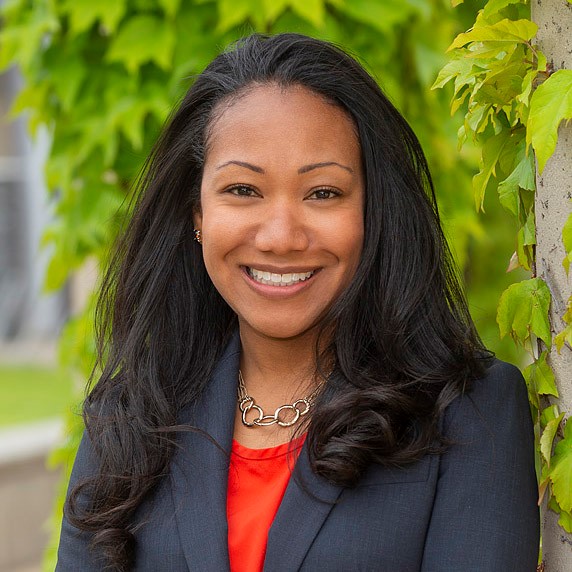
Su Jin Gatlin Jez
California Competes
What among the governor’s proposals will most advance students’ recovery from the pandemic and why?
A theme across the many and varied proposals is the targeting of resources to balance opportunity. This focus maximizes the investments and advances our recovery. For example, the governor’s proposed $1 billion grant program for displaced workers directs at least half be used for student parents.
Additionally, the $4 billion student housing proposal could be a game changer that smartly invests one-time funds for a long-lasting, big impact– and its prioritization of low-income and underrepresented students is another example of maximizing impact. Targeting these significant proposals opens postsecondary access for generations of Californians at a scale not seen in decades.
What priority should have been in the budget but wasn’t?
The May Revise calls for historic systemic changes; however, it overlooks the state’s ability to effectively implement, monitor and improve cross-segment, cross-sector reforms. For this, California needs a higher education coordinating entity that is responsible for complex multi-stakeholder efforts, putting the state’s and students’ needs ahead of any individual system’s. Further, the governor set a goal for postsecondary credential attainment. The coordinating entity could serve as the connective tissue, ensuring the proposals work together to achieve this goal. Finally, the entity would be responsible for evaluating the reforms, allowing the state to assess these unprecedented investments and pivot as needed.
Su Jin Gatlin Jez, Ph.D., is executive director of California Competes: Higher Education for a Strong Economy, a higher education and workforce policy research organization.

Corey Matthews
Community Coalition for Substance Abuse Prevention & Treatment
What among the governor’s proposals will most advance students’ recovery from the pandemic and why?
The intentional and targeted focus on the whole child starting with investments in early education leaves much room for hope and optimism in the future of learning for California’s youth. The specific emphasis on transforming youth behavioral systems and converting schools into community schools while investing in universal pre-K and college feels like the most comprehensive reform to education since the passing of Prop. 13, which worked in the reverse.
What priority should have been in the budget but wasn’t?
Reducing tuition costs and raising the low-income threshold to alleviate student debt burdens for middle-class families.
Corey Matthews is COO at Community Coalition – a permanent community-based organization in South Los Angeles.

Brian Rivas
Education Trust-West
What among the governor’s proposals will most advance students’ recovery from the pandemic and why?
We appreciate the increased funding for all higher education segments, with new investments including the expansion of dual enrollment, addressing nontuition costs including basic needs and housing, and funding for the Student Equity and Achievement Program at community colleges and look forward to seeing them become a reality. As the May Revise moves through the state Legislature, we will continue to monitor other priority proposals, most notably the financial aid access proposal to ensure every high school senior completes a Free Application for Federal Student Aid (FAFSA) or California Dream Act Application (CADAA) and the Cradle-to-Career data system.
What priority should have been in the budget but wasn’t?
We commend the governor for setting a goal that the vast majority of California’s higher education students will successfully earn their degrees. We believe that doing so will require sustainable changes to make college affordable, including modernizing the Cal Grant program and investing in our financial aid system.
Brian Rivas is the senior director of policy and government relations of The Education Trust-West, a research and advocacy organization for education equity, from preschool through college.

Anne Stanton
Linked Learning Alliance
What among the governor’s proposals will most advance students’ recovery from the pandemic and why?
The Linked Learning Alliance appreciates Gov. Newsom and the state Legislature for recognizing and responding to a critical need: serious investment in our state’s cradle-to-career continuum. We applaud the creation of education collaboratives that will bring together stakeholders from across K-12, postsecondary, and workforce systems and funding for college savings accounts. These efforts could be even more impactful if we take purposeful action at the intersection between high school, college, and career. This is especially crucial as we work to support students navigating the transitions that often lead to significant detours away from the promise of a postsecondary degree and high-paying jobs.
What priority should have been in the budget but wasn’t?
The May Revise is intended to accelerate learning and strengthen our education and workforce systems. To maximize the historic levels of education investment, and as enrollments at California’s community colleges are down statewide, the Alliance suggests a more distinct and earlier focus on student transitions — closing the chasms between school, college and career, between potential and possibility — starting in high school. With us for too long and worsened by the pandemic, these gaps between systems are impossible for young people to navigate alone. Both the K-12 and postsecondary segments of education have proven evidence-based practices to leverage and lean on. What we need are seamless transitions that deliberately seek to address the complex educational, social and economic needs of students and, by so doing, keep them on a purposeful path to their futures.
Anne Stanton is president of the Linked Learning Alliance and is the principal architect of the Linked Learning movement in California where she has worked to reinvent how high schools approach college and career preparedness in the state.
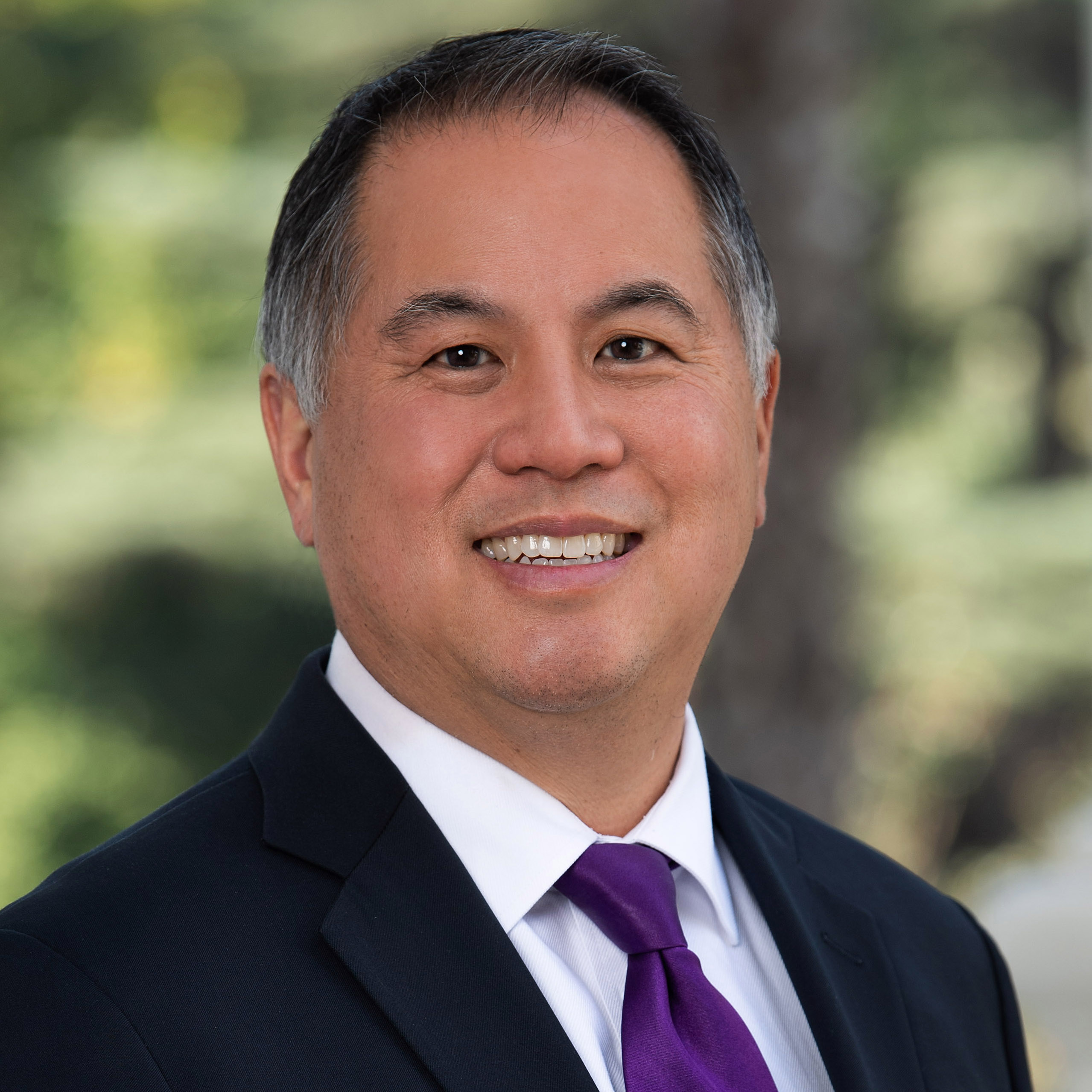
Assemblymember Phil Ting, D-San Francisco
Chair of the Assembly Budget Committee
What among the governor’s proposals will most advance students’ recovery from the pandemic and why?
Like K-12, the most important thing we can do right now is reopen community colleges and universities. The impact of learning loss due to this pandemic cannot be understated, and we owe it to our students to ensure they have access to high-quality education that will prepare them for their careers.
What priority should have been in the budget but wasn’t?
I want to see a bigger investment in Career Technical Education. In addition to college graduates, California will need a workforce that’s trained in highly skilled industries. A diverse labor pool entices companies to locate here and hire our residents. For higher education, the Assembly will push for more access to higher ed: • Significant enrollment growth for UC and CSU to keep on track with the goal of producing 1 million more bachelor’s degrees by 2030 to meet state workforce needs. • In addition, we think one-time money could be used to expand capacity at both UC and CSU, through land acquisition, new buildings on campuses and increased student housing that is affordable.
Assemblymember Phil Ting represents Assembly District 19, which includes the west side of San Francisco and northern San Mateo County.

Jeff Camp
Ed100.org
What among the governor’s proposals will most advance students’ recovery from the pandemic and why?
Among the many proposals, my favorite is a small one: align the chaotic course numbering system across the state’s massive, essential Community College System. This small, annoying exercise in cleaning out the metaphorical garage will make it much easier for students to find the tools they need to build a plan for their future.
What priority should have been in the budget but wasn’t?
California’s public data systems for education remain slow, out of date and confusing. There is no ongoing, funded mechanism for rapid data collection from the field. For example, in order to track the closing and opening of schools during the pandemic shutdown, the state relied not on any functioning official data system: They relied on the nonprofit reporting of EdSource.
Jeff Camp is founder and editor of Ed100.org, a free resource that explains California education issues plainly, in English and Spanish, so that parent leaders and student leaders can get informed, get involved, and be heard.

Audrey Dow
The Campaign for College Opportunity
What among the governor’s proposals will most advance students’ recovery from the pandemic and why?
The governor announced during his budget press conference a commitment to a 70% college attainment goal for adults in California. In addition to raising ongoing base funding for UC and CSU to pre-pandemic levels and backfilling cuts sustained by the systems in 2020 resulting from the Covid-19 pandemic, the governor articulated an intention to create a multi-year agreement with our higher education institutions to reach the 70% goal. This important focus on a goal and action plan for reaching the goal will allow for the proper investment, alignment and accountability needed to significantly increase the educational attainment of California’s residents to improve their lives and keep the state’s economy thriving.
What priority should have been in the budget but wasn’t?
The governor makes once-in-a-generation investments in basic needs and housing for college students. The Legislature and Governor can build on that by investing in the redesign of the Cal Grant program using the Cal Grant Equity Framework. Today, hundreds of thousands of low-income students qualify for Cal Grant, but outdated requirements, including time out of high school at the time of application, moves these students from being entitled to a Cal Grant to a pool in which they have to compete for a Cal Grant.
The competitive Cal Grant pool has approximately 300,000 eligible students competing for 30,000 Cal Grant awards. Redesigning Cal Grants would eliminate several outdated barriers to aid and guarantee hundreds of thousands of eligible low-income students, particularly community college students, the aid they deserve and need to enroll in college and graduate.
Audrey Dow is the senior vice president of the Campaign for College Opportunity, a California policy advocacy and research organization committed to improving racial equity in college access and success.
To get more reports like this one, click here to sign up for EdSource’s no-cost daily email on latest developments in education.














Comments
Comments Policy
We welcome your comments. All comments are moderated for civility, relevance and other considerations. Click here for EdSource's Comments Policy.